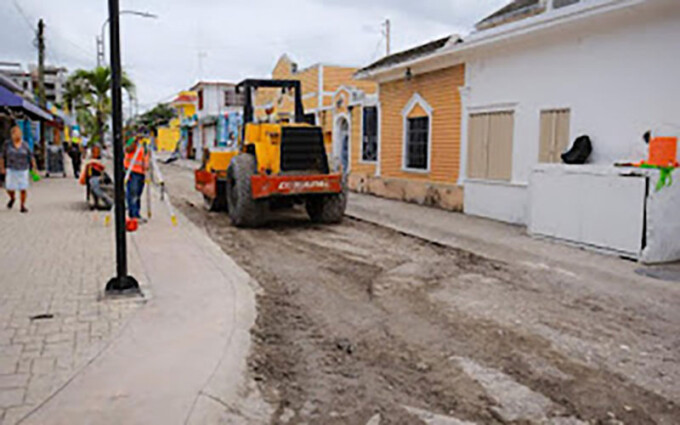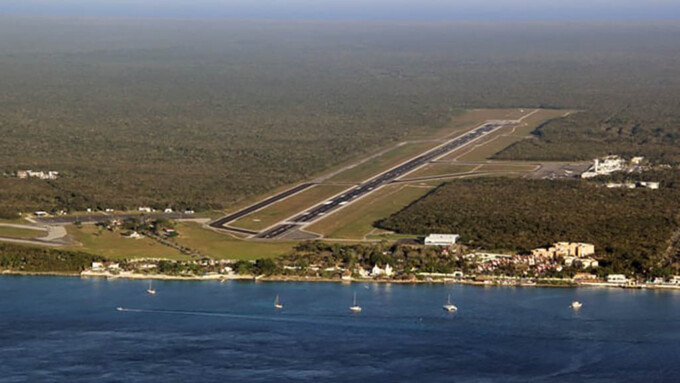Cozumel Immigration Documents
Important Info for Registered Foreigners in Mexico
Attorney Gisela Rodriguez covers several obligations & regulations from INM…
FOREIGN NATIONALS’ OBLIGATIONS TO HOLD THEIR MIGRATORY CONDITION AFTER RECEIVING THEIR TEMPORARY OR PERMANENT RESIDENCY CARDS IN MEXICO.

Just this past week I learned about three cases of foreign nationals who had the migratory condition as Permanent Residents in Mexico and lost this condition because they were unable to prove their regular migratory situation in the Country, as they did not physically have the Resident Card or an Entry and Departure Permit, when required by the Migratory Authority. After hearing their stories I decided to write this piece in order to guide foreign nationals residing in Mexico about what they should know in order to keep their migratory condition.
This time I do not intend to address the entry requirements nor the different types of visas. I mainly wish to focus on foreign nationals who already hold or have a residency condition in process.
As overview, it should be noted that foreign nationals that enter and depart as tourists to and from Mexico must return to their country within the term authorized in their multiple migratory form (FMM), which usually is 180 days. The FMM must be returned at the moment of your flight check-in. If you do not have an FMM or if it has expired, you must request another one at the airport Immigration Office; a penalty will apply.
In accordance with Article 47 of the Immigration Law, foreign nationals living as residents in Mexico must notify their departure at the airport Immigration Office, show their current passports as well as the Resident Card or Entry and Departure Permit, as applicable.
Now, addressing the issue: how was the migratory condition of those foreign nationals as Permanent Residents cancelled? Did they leave or enter Mexico with their Resident Cards or Entry and Departure Permits? The Immigration Authority required them to show their migratory document and they could not prove their regular migratory situation; then again, without each foreign national elaborating on the matter, they came in as tourists and consequently canceled their former migratory condition. In another case, the person left the country hence giving-up the migratory condition without knowing it. Does the replacement of migratory document apply in these cases? No, the replacement does not apply.
What was the consequence of an irregular situation and not knowing what to do? They accepted to enter the country as tourists, and foreign nationals cannot hold two different migratory conditions at the same time, hence the latter voided the former. (Immigration Law Articles 61 and 64)
What must these foreigners do to obtain their former migratory condition? Start from scratch; in other words, start the process before any of the Mexican Consulates aboard, apply for a resident visa and meet the requirements. If the application is approved, return to Mexico to exchange the visa for the resident card.
Foreign nationals’ obligations to remain in the country and validate their regular migratory situation:
First rule: In order for a foreign national to be able to stay in the country, he/she must have a regular migratory situation.
Foreign nationals may stay in the National Territory holding the migratory conditions of visitor, temporary resident or permanent resident (Immigration Law Article 52)
Only Immigration Authorities can require and withhold foreign nationals’ migratory documents.
Second rule: Resident foreign nationals must notify the airport Immigration Authorities of their departure showing their current passport and their Permanent Resident Card or, as applicable, the Entry and Departure permit. It should be emphasized that Mexico currently has a system of migratory flow that when the foreign national’s passport is scanned, his/her entries and departures are recorded. The passport’s data is linked to the temporary or permanent resident card information that, in turn, stores the information on entries and departures. This information is also used for statistical purposes. (Immigration Law Article 47)
Entry to the country
The foreign national must show the current passport and the Permanent Resident Card or, as the case may be, Entry and Departure Permit.
Third rule: No foreign national is lowed to hold two migratory conditions simultaneously (Immigration law Article 61)
Are the migratory condition, the migratory situation and the Temporary or Permanent Resident Card the same thing? The answer is no; they are not the same.
The migratory condition is the regular migratory situation of a foreign national given his/her residency (Immigration Law Article3, Section VI)
The migratory situation refers to the assumption is which a foreign national is depending on whether he/she has complied or failed to comply the migratory conditions for his/her entry and stay in the country. A foreign national has a regular migratory situation when he/she has met said provisions; and will have an irregular migratory situation when he/she has failed to fulfill them (Article3, Section XXVIII)
The resident card is the document issued by the National Migration Institute (INM) with which the foreign nationals validate their regular migratory situation (Article 3, Section XXIX)
What to do if you find yourself in a similar situation as the above foreign nationals? First: if you are in Mexico and wish to leave the country but forgot your card, the best thing to do is return cancel the flight and return home for the resident card or departure permit.
Note: In case of an emergency, you must be aware that not having the card or departure permit will result in losing your status or the one pending resolution.
If you left Mexico with your resident card or your departure permit but forgot it abroad, I suggest that when entering Mexico mention the airport Immigration Officer that you currently are in an irregular migratory situation in the country but wish to normalize your situation and do not wish to enter as a tourist (Immigration Law Article 69, Section V associated with Articles 69, 89, 132 and 133 of the Law). Your administrative process will begin by which, through your passport, the system verifies that you actually have a resident card and you will be presented before the Migratory Authority. You might be taken to a migratory station. This could get you flustered, but all your rights are protected and you are entitled to have legal counsel with you (Immigration Law Article 70). Probably after a couple of hours, the Migratory Authority could give you an official document so that you can appear at the National Migration Institute to apply for a normalization process. In case of a favorable normalization process, the National Migration Institute will issue a new Resident card with the migratory condition you held.
Review the Immigration Law at: https//www.juridicas.unam.mx/legislacion/ordenamiento-ley-de-migracion
Review migratory procedures at: http://www.gob.mx/tramites
To check the way you can obtain a Temporary or Permanent Resident condition in Mexico, work permits or migratory procedures, contact us at: www.cozumellawyer.com
Atty. Gisela Rodriguez
Información importante para los extranjeros con documento migratorio en México
La Abogada Gisela Rodríguez cubre el tema acerca de diversas obligaciones y normas respecto al INM…
OBLIGACIONES DE LOS EXTRANJEROS PARA CONSERVAR SU CONDICIÓN DE ESTANCIA DESPUÉS DE RECIBIR SU TARJETA COMO RESIDENTE TEMPORAL O RESIDENTE PERMANENTE EN MÉXICO.
Esta semana me enteré de tres casos diferentes de extranjeros que habían obtenido su condición de

Residente Permanente en México y que la perdieron por no haber podido acreditar su situación migratoria regular en el país al no contar físicamente con su Tarjeta de Residente o Permiso de Salida y Regreso, al haber sido requeridos por la Autoridad Migratoria. Al escuchar sus historias me propuse escribir este artículo a fin de orientar a todos aquellos extranjeros residentes en México de lo que deben saber para conservar su condición de estancia.
No pretendo abordar ahora los requisitos para internarse a México, ni los diferentes tipos de visas; quiero enfocarme en general a aquellos extranjeros que ya cuentan con una condición de estancia de Residente o en trámite.
Como información general, cabe señalar que los extranjeros que ingresan y salen como turistas a México deben regresar dentro del plazo concedido en su forma migratoria múltiple (FMM) que normalmente es de 180 días. La FMM debe regresarse en el aeropuerto al hacer su check-in del vuelo. Si no cuenta con FMM o se encuentra vencida deberá solicitar otra en la oficina de migración del aeropuerto y será acreedor a una multa.
En caso de extranjeros residentes en México deben de notificar su salida del país en las oficinas de Migración en el aeropuerto y mostrar Pasaporte Vigente y Tarjeta de Residente o Permiso de Salida y de Regreso en su caso, de conformidad con el Artículo 47 de la Ley de Migración.
Entrando al tema, ¿cómo se canceló la condición de estancia de Residente Permanente a ésos extranjeros? ¿Salieron o ingresaron a México sin traer consigo su Tarjeta de Residente o sin Permiso de Salida y de Regreso? La autoridad migratoria les requirió mostrar el documento migratorio y al no hacerlo no pudieron demostrar su situación migratoria regular; luego entonces, sin que el extranjero manifestara algo más, entraron al país como turistas cancelando así su condición de estancia anterior; y, en otro de las casos, saliendo del país renunciando a su condición de estancia sin saberlo. ¿Aplica la reposición del documento migratorio en estos casos? No, no aplica la reposición.
¿Cuál fue la consecuencia de encontrarse en una situación irregular y no saber qué hacer? Accedieron a entrar como turistas y como un extranjero no puede tener dos condiciones de estancia simultáneamente, automáticamente invalidó su condición anterior. (Artículo 61 y Artículo 64 de la Ley de Migración).
¿Qué tienen que hacer esos extranjeros para obtener su anterior condición de estancia? Empezar desde el principio; es decir, iniciar el proceso ante cualquier de los Consulados de México en el extranjero, solicitar una visa de residente y cumplir con los requisitos del trámite y, de concederse, volver a México para obtener la tarjeta de residente por canje.
Obligaciones de los Extranjeros para permanecer en el país y acreditar su situación migratoria regular:
Primer regla: Todo extranjero para permanecer en el país debe contar con situación migratoria regular.
Los extranjeros podrán permanecer en el territorio nacional en las condiciones de estancia de visitante, residente temporal y residente permanente. (Artículo 52 de la Ley de Migración).
Solo las autoridades migratorias pueden requerir y retener los documentos migratorios de los extranjeros.
Segunda regla: Para salir del país el extranjero residente debe notificar a la autoridad migratoria del aeropuerto de su salida y mostrar Pasaporte Vigente y su Tarjeta de Residente Permanente o en su caso, Permiso de Salida y Regreso. Es importante recalcar que en la actualidad México cuenta con un sistema de flujos migratorios por los cuales, al escanear el pasaporte del extranjero se registra su entrada y salida al país. La información del pasaporte está ligada a la información de la Tarjeta de Residente Temporal o Permanente y almacena la información de sus entradas y salidas. Esta información también se utiliza para fines de estadística. (Artículo 47 de la Ley de Migración)
Para ingresar al país, el extranjero residente debe mostrar Pasaporte Vigente y su Tarjeta de Residente Permanente o en su caso, Permiso de Salida y Regreso vigente.
Tercera regla: Ningún extranjero podrá tener dos condiciones de estancia simultáneamente (Artículo 61 de La Ley de Migración).
¿La condición de estancia, la situación migratoria y la Tarjeta de Residente Temporal o Permanente son lo mismo? La respuesta es no; no son lo mismo.
La condición de estancia es la situación migratoria regular de un extranjero en atención a su residencia (Artículo 3 de la Ley de Migración fracción VI).
La situación migratoria: se refiere a la hipótesis en la que se ubica un extranjero en función del cumplimiento o incumplimiento de las disposiciones migratorias para su internación y estancia en el país. Se considera que el extranjero tiene situación migratoria regular cuando ha cumplido dichas disposiciones y que tiene situación migratoria irregular cuando haya incumplido con las mismas; (Artículo 3 fracción XXVIII).
La tarjeta de residente es el documento que expide el Instituto Nacional de Migración con la que los extranjeros acreditan su situación migratoria regular (Artículo 3 fracción XXIX).
¿Qué hacer en caso de encontrarse en una situación similar a la de esos extranjeros? Primero: si se encuentra en México y desea salir del país pero olvidó su tarjeta lo más conveniente es cancelar el vuelo y regresar a casa por la tarjeta de residente o permiso de salida.
Nota: En caso de emergencia debe estar consciente que al no tener la tarjeta o el permiso de salida perderá su condición de estancia o aquella que se encuentra en trámite de resolución.
En caso de haber salido de México con su tarjeta de Residente o Permiso de Salida pero haber olvidado la misma en el extranjero, sugiero que al entrar a México indicar al oficial de migración del aeropuerto que se encuentra en una situación migratoria irregular en el país pero desea solicitar la regularización de su situación y no desea entrar como turista (Artículo 69 fracción V de la Ley de Migración, en relación con los artículos 69, 89, 132 y 133 de la Ley). Se iniciará un procedimiento administrativo en el que, a través de su pasaporte, se verifica en el sistema que efectivamente cuenta con tarjeta de residente y se le presentará ante la autoridad migratoria. Es posible que se le traslade a una estación migratoria. Esto podría ponerle nervioso pero todos sus derechos están protegidos y tiene derecho a tener un abogado presente (Artículo 70 de la Ley de Migración). Es posible que después de un par de horas la autoridad migratoria le entregue un oficio para que con éste acuda a las oficinas del Instituto Nacional de Migración a solicitar trámite de regularización. En caso de que el trámite de regularización sea favorable, el Instituto Nacional de Migración expedirá una nueva tarjeta de Residente con la condición de estancia que tenía.
Para consulta de la Ley de Migración ir a:
https://www.juridicas.unam.mx/legislacion/ordenamiento/ley-de-migracion
Para consulta de trámites migratorios:
Para consultas sobre cómo obtener una condición de estancia de Residente Temporal o Permanente en México, permisos de trabajo o trámites migratorios contactarnos en www.cozumellawyer.com
Lic. Gisela Rodríguez
______________________________
Una ex yanqui de Connecticut quien llama hogar a Cozumel desde hace más de 15 años. Laura escapó al Caribe hace años, desplazándose de una isla a otra dando clases de BUCEO. Se dedicó a perder el tiempo en Jamaica y finalmente se detuvo en Cozumel para pasar unas vacaciones de 2 semanas que aún no terminan. Convenciendo a sus padres que pagaran una elegante universidad privada, obtuvo su título en Periodismo y Laura crea semanalmente Cozumel 4You, medios sociales y artículos promocionales sobre la Isla y también es moderadora en el grupo Cozumel 4 You en Facebook que actualmente cuenta con 25,000 miembros. Fabián, s umuy tolerante marido, desde hace mucho tiempo se resignó a no tener vida privada, pues se ha visto implicado en los diversos proyectos y planes que urde Laura. Son orgullosos padres de diversos perros y gatos rescatados. Mientras contempla su paso a través de la vida en el Caribe mexicano,Laura continúa siendo la pesadilla en la existencia de su muy tradicional suegra mexicana.
- San Miguel Cozumel Celebrates 176 Years - December 12, 2025
- Flamingos Punta Sur - December 12, 2025
- Cozumel Hurricane Season 2025 - December 11, 2025
An ex-Connecticut Yankee who has called Cozumel home for over 18 years, Laura ran away to the Caribbean years ago, bumped around the islands teaching SCUBA diving, lost some time in Jamaica, and finally stopped in Cozumel for a 2 week vacation that hasn’t ended yet. With a degree in Journalism from a fancy private college she convinced her parents to pay for, Laura writes, edits, and creates the weekly Cozumel 4 You news, social media, and promotional articles about the island, as well as moderates the Cozumel 4 You Facebook group, which currently has over 25,000 members. Her long suffering husband, Fabian, has long since resigned himself to having zero private life, as he’s been involved in her various schemes and plots since his arrival. Proud parents to a variety of rescue dogs and cats, Laura continues to be the bane of her traditional Mexican mother-in-law’s existence, as she muses her way through life in the Mexican Caribbean. ______________________________ Una ex yanqui de Connecticut quien llama hogar a Cozumel desde hace más de 15 años. Laura escapó al Caribe hace años, desplazándose de una isla a otra dando clases de BUCEO. Se dedicó a perder el tiempo en Jamaica y finalmente se detuvo en Cozumel para pasar unas vacaciones de 2 semanas que aún no terminan. Convenciendo a sus padres que pagaran una elegante universidad privada, obtuvo su título en Periodismo y Laura crea semanalmente Cozumel 4You, medios sociales y artículos promocionales sobre la Isla y también es moderadora en el grupo Cozumel 4 You en Facebook que actualmente cuenta con 25,000 miembros. Fabián, s umuy tolerante marido, desde hace mucho tiempo se resignó a no tener vida privada, pues se ha visto implicado en los diversos proyectos y planes que urde Laura. Son orgullosos padres de diversos perros y gatos rescatados. Mientras contempla su paso a través de la vida en el Caribe mexicano, Laura continúa siendo la pesadilla en la existencia de su muy tradicional suegra mexicana.
1 Comment
Leave a Reply Cancel reply
Cozumel Royal Caribbean beach Club controversy
Cozumel: The Beach Club Conflict, the Cruise Trust, and Local Art Text...
ByLaura WilkinsonMay 4, 2017IRONMAN Routes, Local Merchant Complaints, and the 2025 WTTS Summit
IRONMAN Cozumel 2025: Schedules, Route, and Road Closures As every year, Cozumel...
ByLaura WilkinsonMay 4, 2017Cozumel Road Closures
Road Closures in Cozumel Downtown Due to Construction: Controversy at the Start...
ByLaura WilkinsonMay 4, 2017Cozumel Airport Expansion
Government Greenlights Major Expansion for Cozumel International Airport Text & Translation by...
ByLaura WilkinsonMay 4, 2017


















I’d like to find out more? I’d want to find out some additional information.